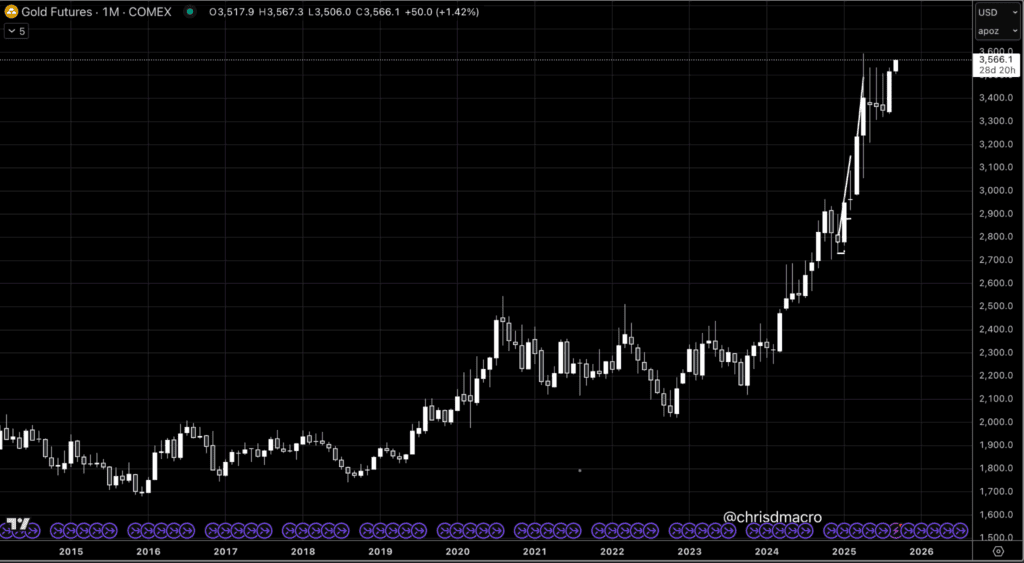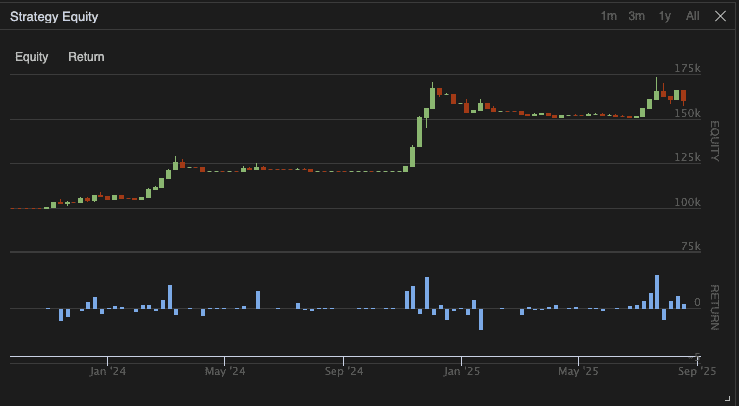“When we find our treasure, we forget where we put our picks and shovels.” – Bert McCoy
Our Value Investing Letter Recaps keep things simple.
Each email focuses on three value investing hedge fund letters, three ideas, all digestible in three minutes.
Within each idea we answer four main questions:
- What does the business do?
- Why is it a good bet?
- Why does the opportunity exist?
- What is the prize if you’re right?
Quick housekeeping note that nothing you read is investment advice and please do your own due diligence before investing. Also, I do not own any of the below-mentioned securities as of this writing.
Finally, we get each investment letter from r/SecurityAnalysis, which you can find here.
Let’s get after it.
Top 3 Value Investing Letters You Need To Know About
1. Right Tail Capital: Ferguson PLC (FERG)
Jeremy Kokemor runs Right Tail Capital and in his latest letter pitches FERG, which you can read here. Let’s run FERG through our four main questions (emphasis added).
What does FERG do?
“Ferguson is a leading, primarily US-based distributor ($23B mkt cap) of plumbing and HVAC supplies that is split roughly evenly between non-residential (44%) and residential (56%) as well as repair/remodel (60%) and new construction (40%).”
Why is it a good bet?
“Ferguson benefits from a prime spot in its value chain – fragmented suppliers (over 30,000), many customers (~1 million), and small competitors (75% of revenue comes from #1 or 2 market positions where the primary competitors are mom and pops). By providing great service and parts availability, Ferguson can help guide its customers to the parts they want and supply them in a timely fashion.
The contractors who buy from Ferguson certainly care about price, but price is likely not as big of a concern for most of them as getting the correct part on time and on budget. While prices going up too high too fast may lead to demand destruction, Ferguson and contractors can often pass-through increases in prices due to the company’s great service, parts availability, and that in many cases the parts are needed.
Ferguson trades at a significant discount to other high quality industrial distributors (for example, FAST, POOL, and WSO trade at 17x P/E or higher) despite having economics that look more similar than different. ”
Why does the mispricing exist?
“Investors are questioning Ferguson’s near term fundamentals partially due to increases in interest rates and the impact that may have on construction. I do not know what will happen to business fundamentals though I recognize that this business has historically done a good job of holding onto price after prices have risen. The 60% of revenues that comes from repair/remodel should provide some protection against any potential cyclical headwinds in new housing starts and commercial construction.
There has likely [also] been some forced selling from European passive investors now that the business is no longer primarily listed in London. Management estimates that as Ferguson gets added to US indices (possibly the S&P 500) over the next year or so, there could be demand for twice as many shares.
What is the prize if you’re right?
If the economy holds up and FERG’s earnings are flat to growing over the next several years (Ferguson usually grows earnings at a mid-teens rate), then the stock could potentially double in the next 3-5 years. If there’s a more severe pullback in business fundamentals, then Ferguson’s earnings could decline further (perhaps 25%) and our potential returns as shareholders may take longer to realize – even in this case, Ferguson’s earnings multiple would still be trading at a discount to the broader stock market despite being an above average business.”
Further Research Material
2. Laughing Water Capital: AvidBiosciences (CDMO)
Matt Sweeney at Laughing Water Capital outlined his thesis for CDMO in his latest Q2 investor letter, which you can read here. Let’s run it through our four main questions.
What does the business do?
“CDMO is a large molecule, small batch Contract Drug Manufacturing Organization.”
Via TIKR: CDMO is a contract development and manufacturing organization, provides process development and current good manufacturing practices (CGMP) clinical and commercial manufacturing services focused on biopharmaceutical drug substances derived from mammalian cell culture.
Why is it a good bet?
“You don’t have to make any blind assumptions about total addressable market (TAM), customer acquisition costs (CAC), or churn. There is very little risk of “garbage in, garbage out” when modeling Avid’s future. Rather, Avid’s assumed growth is tied to building additional manufacturing capacity …
The company is in the process of expanding its manufacturing footprint, having announced plans to have revenue generating capacity of $370M within the next ~12 months, vs. revenues of $119.6M in fiscal 2022 (YE April 30) …
CDMOs are largely recession proof businesses. Patients still need their drugs regardless of what is happening in the real economy …
Lastly, once the facilities are built out, they are relatively capital light, and maintenance cap-ex should be 3-3.5% of revenue. Thus, at the prices we were buying our shares, CDMO was perhaps 3 or 4 years away from trading at 7x-8x steady state free cash flow.”
Why does the mispricing exist?
“I want to stress again that things can go wrong with our investment in Avid Bioservices; there is no such thing as a perfect investment. In particular, the obvious risk here is that industry capacity expansion becomes less rational than it has been historically. To be clear other industry participants are also adding capacity, although much of this expansion has been international, and focused on larger scale (20,000+ liter) capacity drug substance, while Avid plays in the smaller scale (2,000 liter and smaller) arena, and I believe domestic capacity is highly valued due to supply chain concerns …
Avid also has a concentrated customer base, although capacity expansion should dilute this potential problem, and their largest customer Halozyme Therapeutics (HALO) is guiding to more than double revenues over the next few years, which is likely a big reason that Avid Bio is expanding.”
What’s the prize if you’re right?
“At a multiple of 15x my estimate of FCF, which seems punitive for fast growing, recession proof free cash flow with strategic flexibility, shares would trade hands at $25, or a 20%-28% CAGR from our purchase price, assuming all else equal.”
Further Research Material
3. Alta Fox Capital: Everbridge (EVBG)
Connor Haley’s Alta Fox letters are some of my favorite quarterly reads. He finds and invests in unique business globally, and I always learn something new when reading his thoughts. You can check out his latest letter here.
Let’s dissect one of his latest pitches, EVBG.
What does the business do?
“Everbridge is an enterprise SaaS business that provides mass notification and critical event management (CEM) software in a world with increasing risks (natural disasters/weather, civil unrest, pandemic, active shooters, etc). The software allows large corporates to better manage employees and assets during times of disruption.”
Why is it a good bet?
“Everbridge serves 47 of the Fortune 50, has 110%+ net revenue retention, gross margins approaching 80%, and EBITDA margins that are beginning to meaningfully inflect higher.”
Why does the opportunity exist?
“The stock has always been far too expensive for us to underwrite to acceptable IRR thresholds within a reasonable valuation framework …
The sudden departure of the company’s CEO in December 2021 as well as forward guidance below the Street’s lofty expectations, prompted a precipitous fall in EVBG’s share price. In December, when Everbridge’s former CEO left to take the CEO role at a large PE-backed cloud business, he likely knew that EVBG trading at 14x revenue with slowing growth meant limited upside ahead (and limited personal wealth creation).
We believe the CEO departure, two disappointing 2022 guides, and broader market volatility have put Everbridge into the penalty box.”
What is the prize if you’re right?
“While we believe a sale of the company is in the best interest of all stakeholders, even if the company stays public, we estimate investors can achieve a ~30% IRR over the next several years as Everbridge’s EBITDA margins expand to the mid-30s and assuming a modest 13x EBITDA multiple.”
Further Research Material
Wrapping Up This Week’s Value Investing Letters: What To Read Next
Thanks for reading, and I hope you learned something. If you enjoy this series, let me know by shooting an email or retweeting on Twitter.
Also, please let me know if there’s an investor letter I should read that I didn’t cover here.







